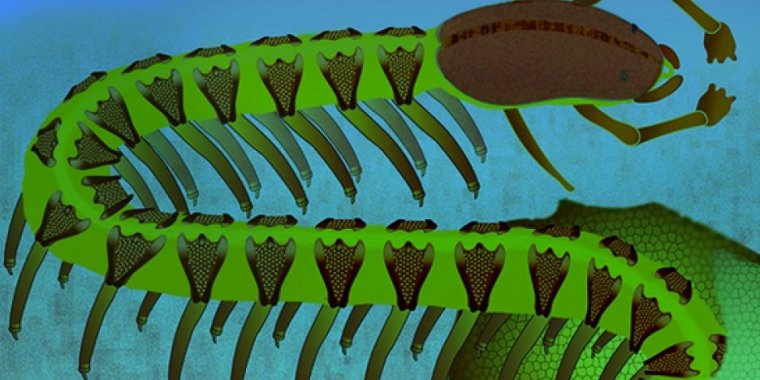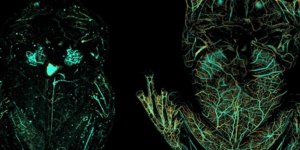| News / Science News |
525-million-year-old fossil defies textbook explanation for brain evolution
Fossils of a tiny sea creature that died more than half a billion years ago may compel a science textbook rewrite of how brains evolved.

Artist's impression of a 525-million-year-old Cardiodictyon catenulum on the shallow coastal sea floor. Photo: Nicholas Strausfeld/University of Arizona
A study provides the first detailed description of Cardiodictyon catenulum, a wormlike animal preserved in rocks in China's southern Yunnan province.
Measuring barely half an inch long and initially discovered in 1984, the fossil had hidden a crucial secret until now: a delicately preserved nervous system, including a brain.
C. catenulum belongs to an extinct group of animals known as armored lobopodians, which were abundant during a period known as the Cambrian, when virtually all major animal lineages appeared over an extremely short time between 540 million and 500 million years ago.
Lobopodians likely moved about on the seafloor using multiple pairs of soft, stubby legs that lacked the joints of their descendants, the euarthropods — Greek for "real jointed foot." Today's closest living relatives of lobopodians are velvet worms that live mainly in Australia, New Zealand and South America.
In the new study, scientist Nicholas Strausfeld of the University of Arizona and colleagues identified the brain of C. catenulum and compared it with those of known fossils and living arthropods, including spiders and centipedes.
Combining detailed anatomical studies of the lobopodian fossils with analyses of gene expression patterns in living descendants, the researchers conclude that a shared blueprint of brain organization has been maintained from the Cambrian through today.
The principles described in the study probably apply to other creatures outside of arthropods and their immediate relatives, the researchers say.
That has important implications in comparing the nervous systems of arthropods with those of vertebrates, which show a similar architecture in which the forebrain and midbrain are genetically and developmentally distinct from the spinal cord. (U.S. National Science Foundation)
YOU MAY ALSO LIKE





